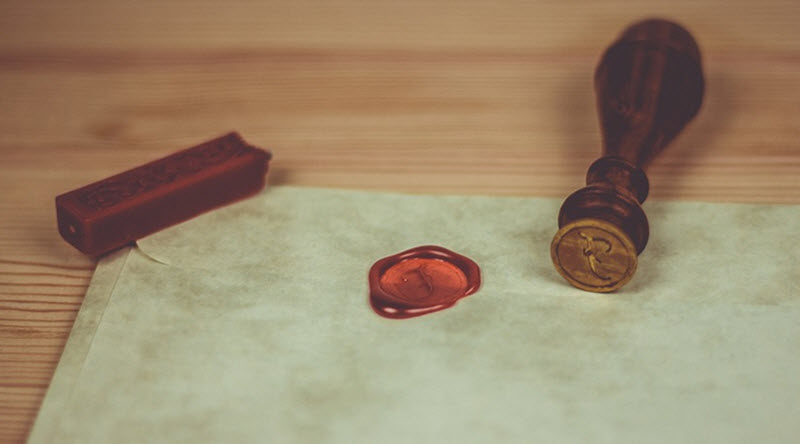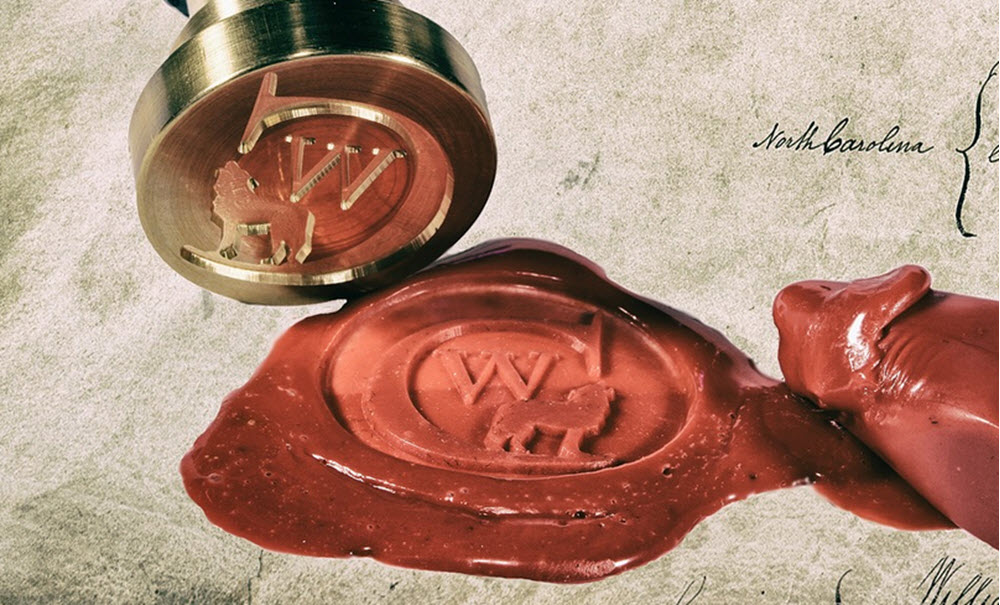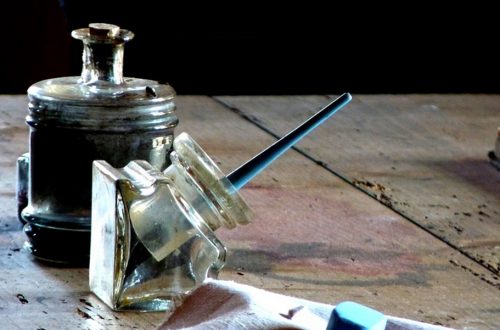Contents
Sealing wax is softened/melted with heat, poured into a small circle on parchment, paper or similar, and then stamped to create an embossment. The wax will cool and harden quickly at room temperature.
Traditionally, sealing wax has been used to make documents more difficult to tamper with without leaving traces. Example: A private letter could be folded, sealed with wax and sent on to the recipient. The recipient would receive the letter, inspect the wax for signs of tampering, and then break the seal to open the letter.
For wrapped boxes, sealing wax was typically applied to both the ribbons and wrapping in the same spot, to make it difficult to remove the ribbons without causing damage to the wrapping too. This tradition is still popular for gift boxes, especially for Christmas.
Embossed sealing wax can also used on a document to verify the identify of the sender or issuer. A legal document can for instance feature one or more wax seals that are never meant to be broken; they are just stamps of authenticity In previous centuries, people who frequently needed to authorize documents could wear a special signet ring that would be used as a stamp.
Buying sealing wax
Sealing wax is available as sticks, tapers and granules.
The stick-type can be with our without wick.
A taper can be kept on a wax jack.
Granules need to be placed in a container, e.g. a spoon, before being heated up.
How to use a stick-type sealing wax (no wick)
- Light a candle and let it develop a steady flame.
- Hold the end of the wax stick over the flame. Keep it close enough to soften the wax, but not close enough to burn the wax.
- When a marble-size amount of wax is soft, apply it to the desired place, e.g. the back of an envelop. Rub it around in a circular motion until it has reached the desired size and thickness.
- Pull away the stick, and then apply the seal to the wax circle. When you lift up the seal, you should see a clear impression. Tip! It is easier to get a great result if you warm up the seal prior to use.
When learning, it can be difficult to apply the right amount of wax. If you don´t get it right at first at point 3, take the stick back to the candle and soften some more wax, then put that wax on top of the wax already present, and use the stick to blend (circular motions) before you emboss with the seal.
If using the stick feels to messy, cut off a small piece of the stick an place it in a melting spoon instead. Let the wax melt most of the way in the spoon over a candle flame, and then gently pour it out on the desired spot. If the wax is melting in an uneven fashion in the spoon, you can use a toothpick to stir it. Note: If you keep the wax over the flame for too long, the wax can become to thin and difficult to pour and stamp. Let it cool a bit in the spoon, away from the flame, before you pour it, to get it back to the right condition.

Traditional ingredients
In Medieval Europe, sealing wax was typically made from beeswax and Venice turpentine. Venice turpentine is a greenish-yellow resinous extract derived from the European larch tree. The famous red colour of old sealing wax is not a result of these ingredients; it came from the addition of vermilion.
In the 1500s, a new type of sealing wax became popular in Europe where the main ingredients were shellac, turpentine, resin, chalk (or plaster), and some colour matter (such as vermilion or red lead). Beeswax was not necessary but could be included. Including beeswax was more common for wax intended for the large seals put on public documents.
For those who could afford it, sealing wax could be obtained perfumed with musk, ambergris and other expensive scents.
Coloured sealing wax
Early sealing-wax was not coloured at all, and then it became popular to add vermilion to make it red. For a long time, vermilion red really dominated, but eventually wax with other colours also became fairly widespread in Europe and in countries with a strong European influence.
By the mid-1800s, it was not overly complicated to obtain sealing wax in colours such as blue (containing smalt or verditer), green (containing verdigris derived from copper), yellow (containing Schuetteite), and black (using lamp black derived from soot). It was even possible to buy white wax that had been coloured using white lead.
In Great Britain, the use of coloured wax on official documents developed to become rather complex, with each colour being assigned to its own class of documents by the British Crown.






